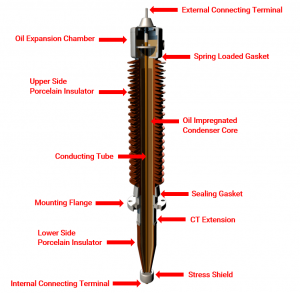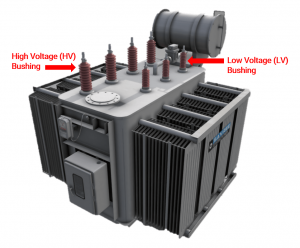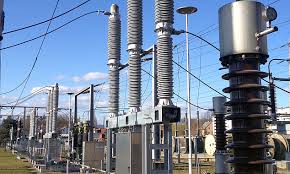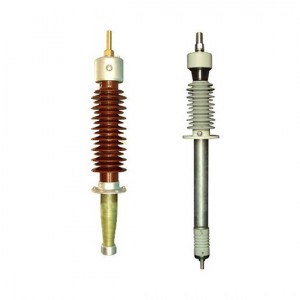High-voltage bushing refers to a device that allows one or several conductors to pass through partitions such as walls or boxes for insulation and support, and is an important device in power systems. In the process of manufacturing, transportation and maintenance, high-voltage bushings may have latent defects due to various reasons; during long-term operation, they are affected by the effects of electric field and conductor heating, mechanical damage and chemical corrosion, and atmospheric conditions. There will also be defects gradually.
High-voltage bushings are mainly used for ground insulation of incoming and outgoing lines of power equipment such as transformers, reactors, and circuit breakers, and high-voltage circuits passing through walls. There are three types of high voltage bushings: single dielectric bushing, composite dielectric bushing and capacitive bushing. The main insulation of the capacitive bushing is composed of a coaxial cylindrical series capacitor bank formed by winding layered insulating materials and foil metal electrodes alternately on the conductive rod. According to different insulating materials, it is divided into gummed paper and oiled paper capacitive bushing. 110kV and above transformer high-voltage bushings are usually oil-paper capacitor type; It is composed of wiring terminals, oil storage cabinet, upper porcelain sleeve, lower porcelain sleeve, capacitor core, guide rod, insulating oil, flange, and pressure ball.
During the operation of the high-voltage bushing, the main insulation must withstand high voltage, and the conductive part must bear large current. The main faults are poor connection of internal and external electrical connectors, damp and deterioration of bushing insulation, lack of oil in bushing, partial discharge of capacitor core and discharge of end screen to ground, etc.
The transformer bushing is an outlet device that leads the high-voltage wire of the transformer winding to the outside of the oil tank, and serves as a conductive part support and ground insulation. During the operation of the transformer, the load current passes through for a long time, and the short-circuit current passes through when a short circuit occurs outside the transformer.
Therefore, the transformer bushing has the following requirements:
Must have specified electrical strength and sufficient mechanical strength;
It must have good thermal stability and be able to withstand instantaneous overheating when short-circuited; small in shape, small in mass, and good in sealing performance.
Classification
High-voltage bushings can be divided into oil-filled bushings and capacitive bushings.
The cable paper in the oil-filled bushing is similar to the equalizing plate in the capacitive bushing. The capacitor core in the capacitive bushing is a series of coaxial cylindrical capacitors, and in the oil-filled bushing, the dielectric constant of the insulating paper is higher than that of the oil, which can reduce the field strength there.
Oil-filled bushings can be divided into single oil gap and multi-oil gap bushings, and capacitive bushings can be divided into gummed and oiled paper bushings.
Sleeves are used when current-carrying conductors need to pass through metal enclosures or walls at different potentials. According to this applicable occasion, bushings can be divided into transformer bushings, bushings for switches or combined electrical appliances, and wall bushings. For this “plug-in” electrode arrangement, the electric field is very concentrated at the edge of the outer electrode (such as the middle flange of the bushing), where the discharge often starts.
The use and characteristics of casing
High-voltage bushings are used for high-voltage conductors to pass through partitions with different potentials (such as walls and metal casings of electrical equipment) for insulation and support. Due to the uneven distribution of the electric field in the bushing, especially the concentrated electric field at the edge of the middle flange, it is easy to cause surface slipping discharge. The internal insulation structure of the bushing with higher voltage level is more complex, often using combined insulating materials, and there are problems such as partial discharge. Therefore, the test and inspection of casing must be strengthened.
Post time: Mar-27-2023




